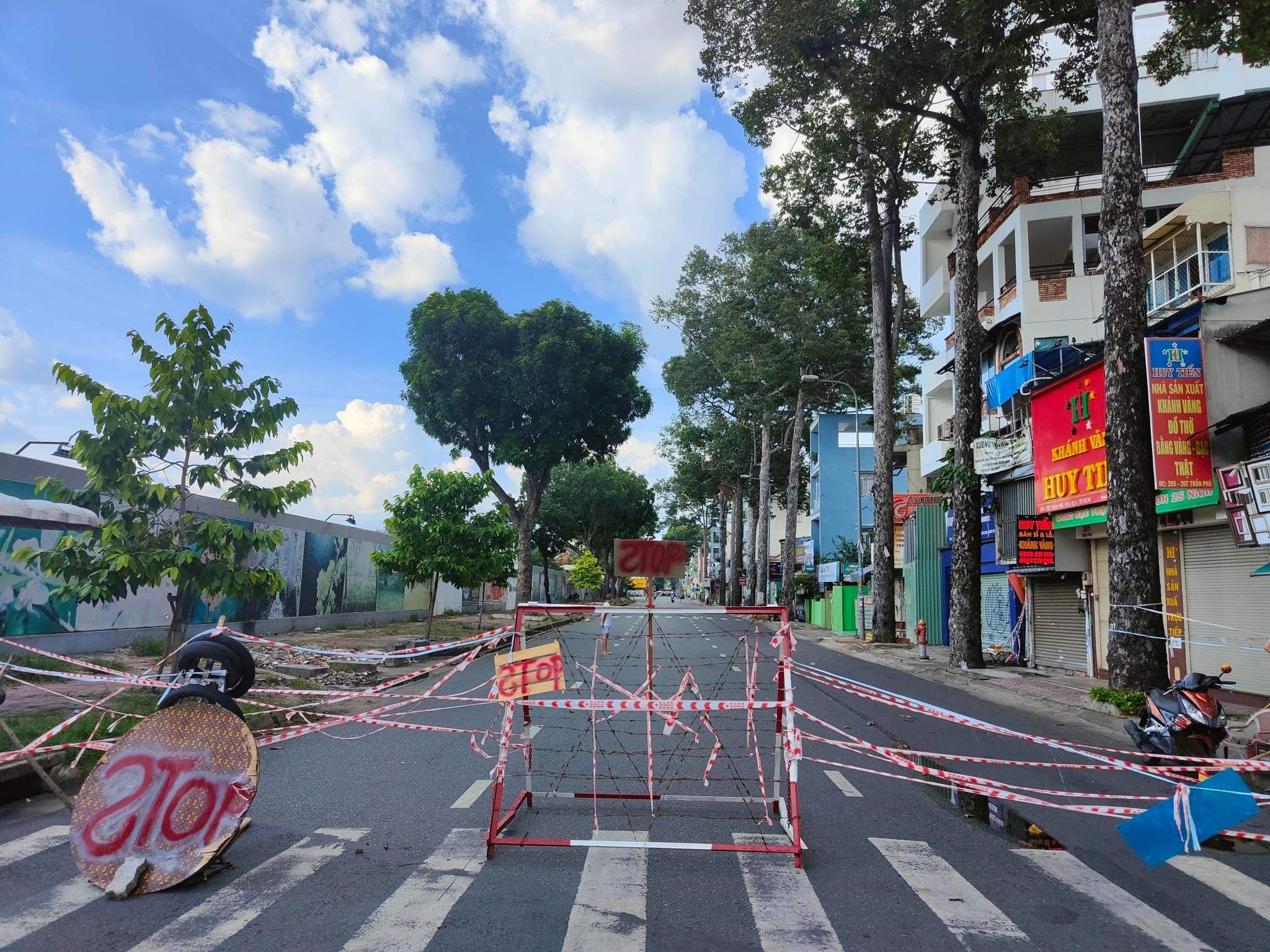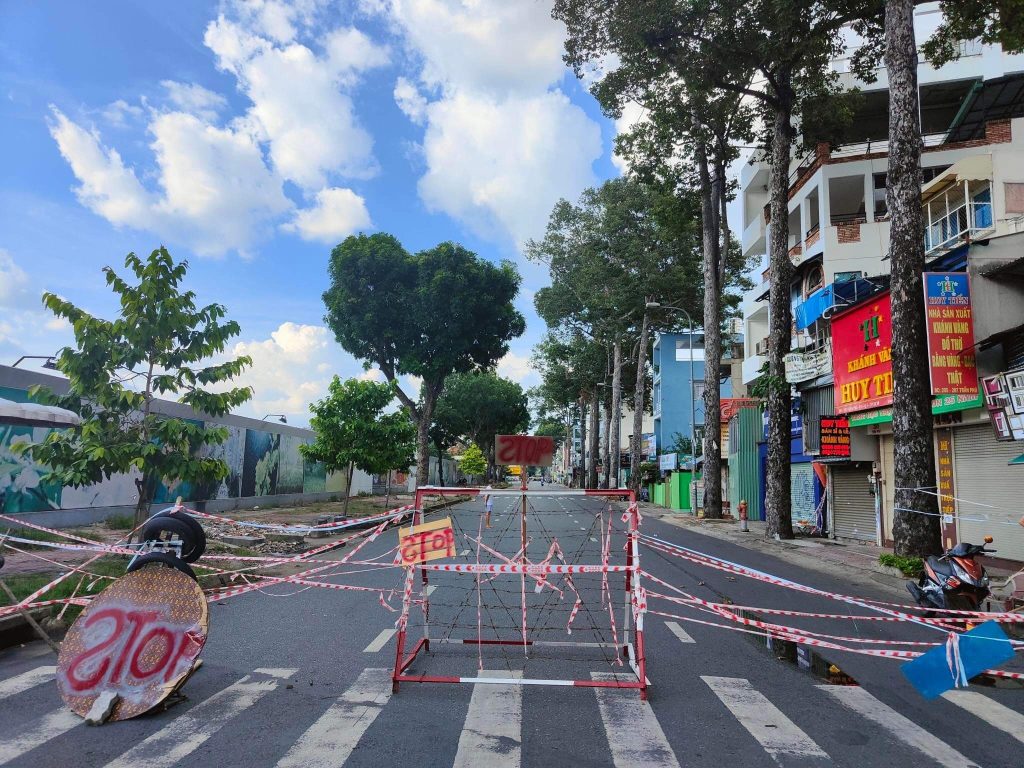
Location
Ho Chi Minh City, Vietnam
Synopsis and Position
The COVID-19 pandemic has disrupted almost every facet of our world, prompting a variety of material responses in societies across the globe. This project draws on approaches in contemporary archaeology to witness and document COVID-19 materiality – posters, signage, murals, graffiti, discarded personal protective equipment, disinfection paraphernalia, barricades – on the streets of Ho Chi Minh City, Vietnam through photographs and sketches to create a fully accessible online archive of COVID-19 heritage. The project is timely. As lockdowns fade from memory, debates are ongoing as to how the extraordinary period of pandemic will be remembered. Meanwhile, material traces of pandemic are beginning to disappear as daily life resumes under ‘new normal’ conditions. Our research seizes the opportunity not only to create an open access archive of COVID-19 heritage but to test the extent to which material perspectives in research on disasters can improve understandings of the relationships between public action and government policies.
Objectives and Methods
Methodological tools to document unexpected, ephemeral events and investigate the social dynamics of disasters and disaster recovery are lacking. This study uses a mixed methods approach incorporating ethnographic, archaeological and arts-based methods to create an ‘archive from below’ that acknowledges alternative visions of the past and may offer a counterpoint to official narratives. Through informal conversations, semi-structured interviews and potentially through extended ethnographic encounters, the three research team members will engage with city dwellers who interface with transient COVID-19 materiality to understand the social meaning they ascribe to it. By employing visual arts practices – sketching, painting, photography – we stretch the meaning of archive and engage non-academic audiences. And in creating a social media repository, we will be developing an innovative mode of archival practice that accommodates diverse community experiences of pandemic. Learning from our research may support and inform others seeking to understand the social impacts of disasters through the analysis of space and material.
Workshops and Events
- June 2023– Rachel Tough (PI) and Diana Le (Co-I) presented the project at the ‘Heritage, Community, Archives: Methods, Case Studies, Collaboration’ conference at Sheffield Hallam University.
- July 2023 – In-person ‘conversation cafe‘ and pilot exhibition held at ‘Still Thinking Spaces’ event space in Ho Chi Minh City, facilitated by Hao Bui (Co-I)
- June 2024 – In-person workshop with COVID-19 ‘memory entrepreneur’ and owner of Vietnam’s biggest collection of COVID-19 materiality Mr Hiep in Cafe Lua, Ho Chi Minh City. Workshop facilitated by Pham Thanh Thoi (University of Social Sciences and Humanities) and filmed by videographer Thanh Son Nguyen. The workshop was supported through ad hoc additional funding from Imagining Futures. Findings from this workshop will be presented in a short ethnographic film and will inform the project team’s planned future research to preserve Mr Hiếp’s collection of COVID-19 objects.
- December 2024 –In-person exhibition and launch event hosted by Little Bean cafe and events space in Ho Chi Minh City, facilitated by Hao Bui (Co-I) and new team members Lai Minh Ngoc and Minh Tam. This event forms part of the two year follow-on phase of the project that is funded by an AHRC IAA award. You can read more about this major award and planned impact activities HERE).
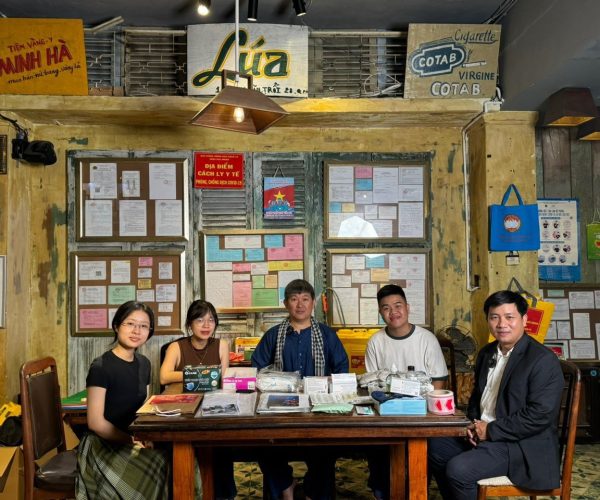
Activities
- September 2022– scoping visits in local neighbourhoods in Ho Chi Minh City
- October – December 2022– ethnographic data collection across Ho Chi Minh City
- January – March 2023– design and setup of website and social media channel containing COVID-19 materiality and memories, co-production of metadata schema
- April 2023– application for AHRC IAA follow-on funding (successful)
- June – July 2023– planning for in-person ‘conversation cafe’ and pilot exhibition; further website functionality added
- October 2023– Selected as pilot project for the Imagining Futures permanent repository hosted by G. Leventis Resource Centre in the Department of Archaeology and Heritage Studies at the University of Ghana
- November 2023– Hao Bui (Co-I) presented the project at the Association of Southeast Asian Studies conference in Jakarta, Indonesia, funded by an Imagining Futures Mobility Award. You can read more about Hao’s mobility HERE.
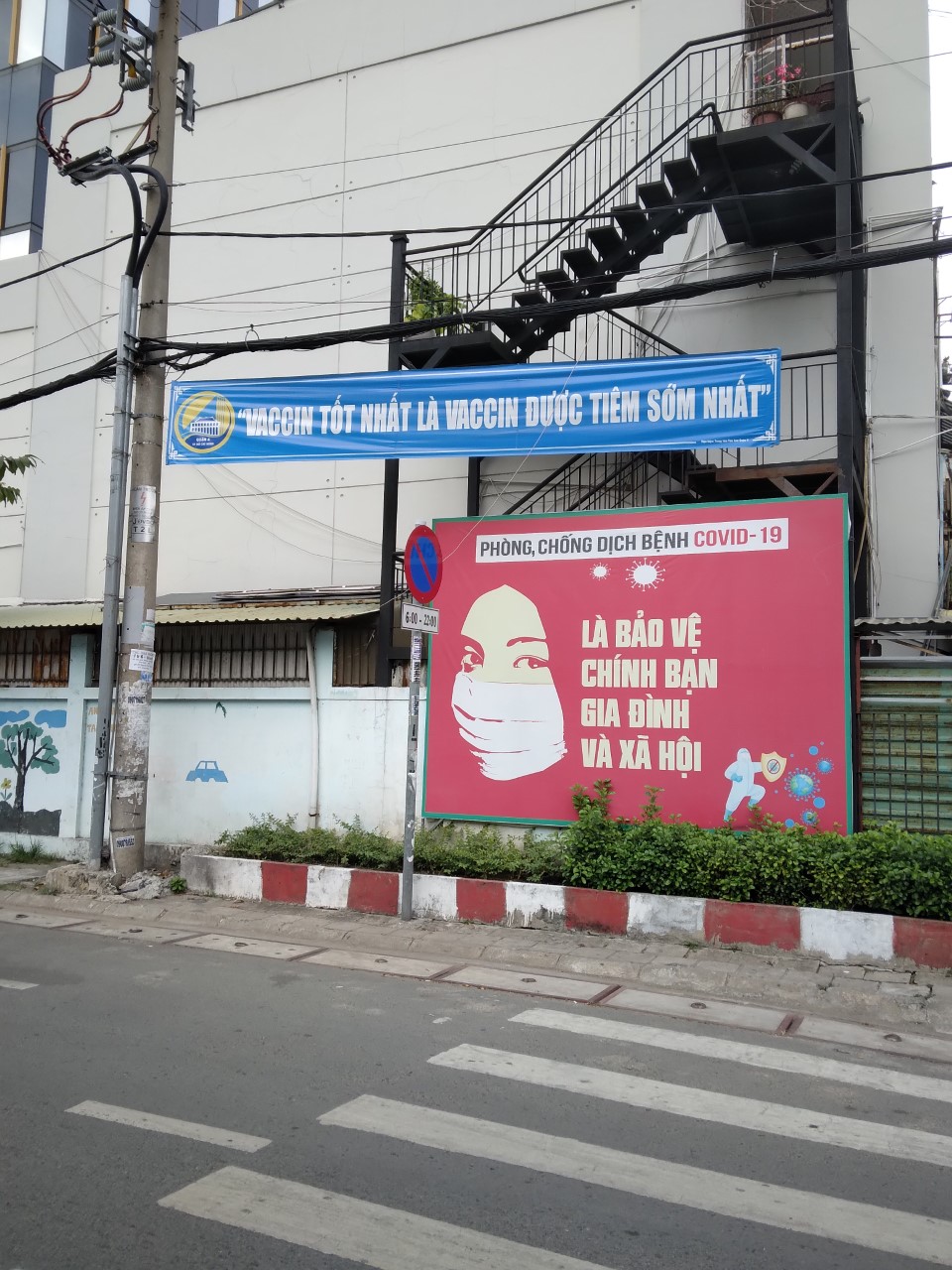
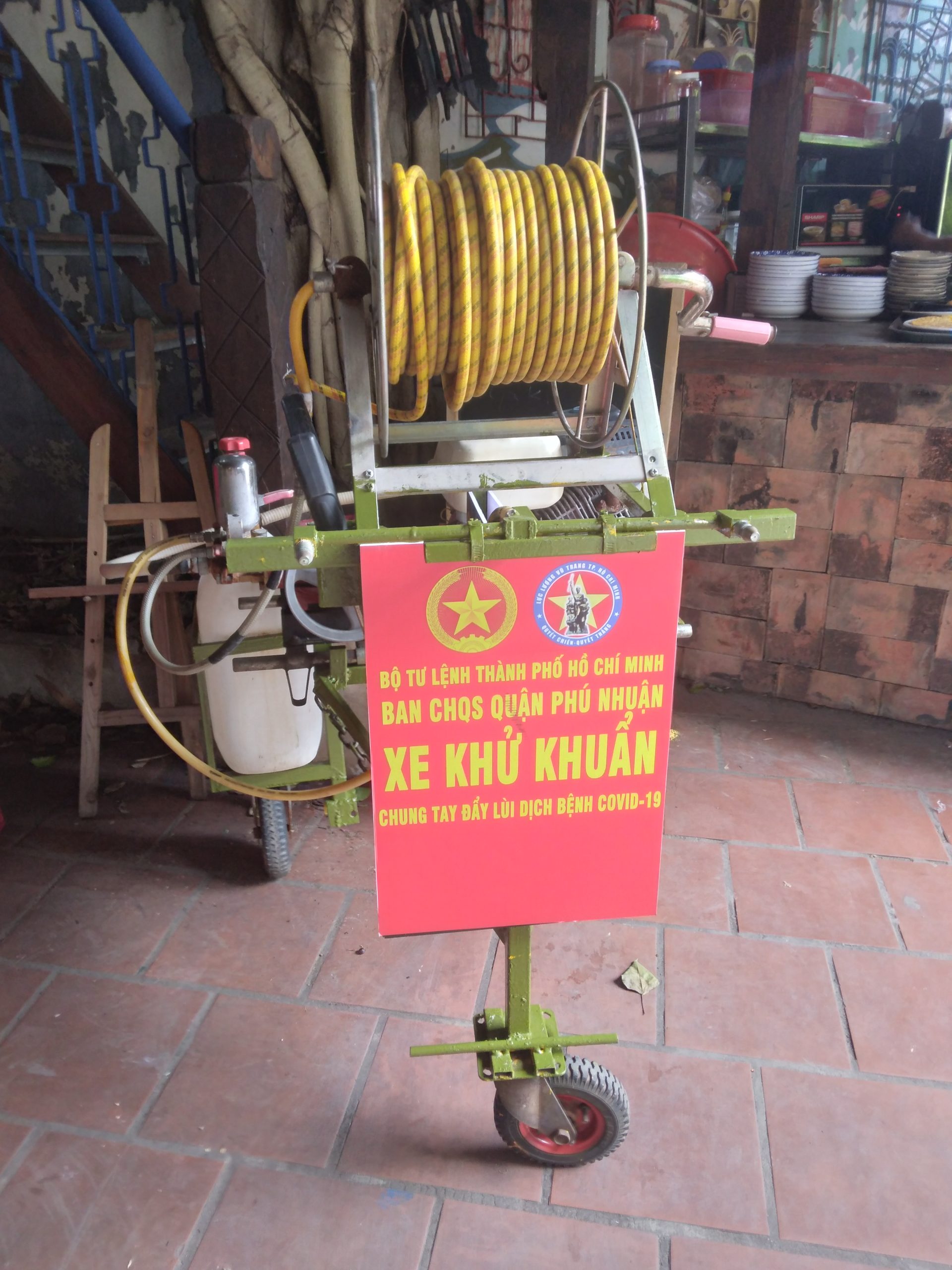
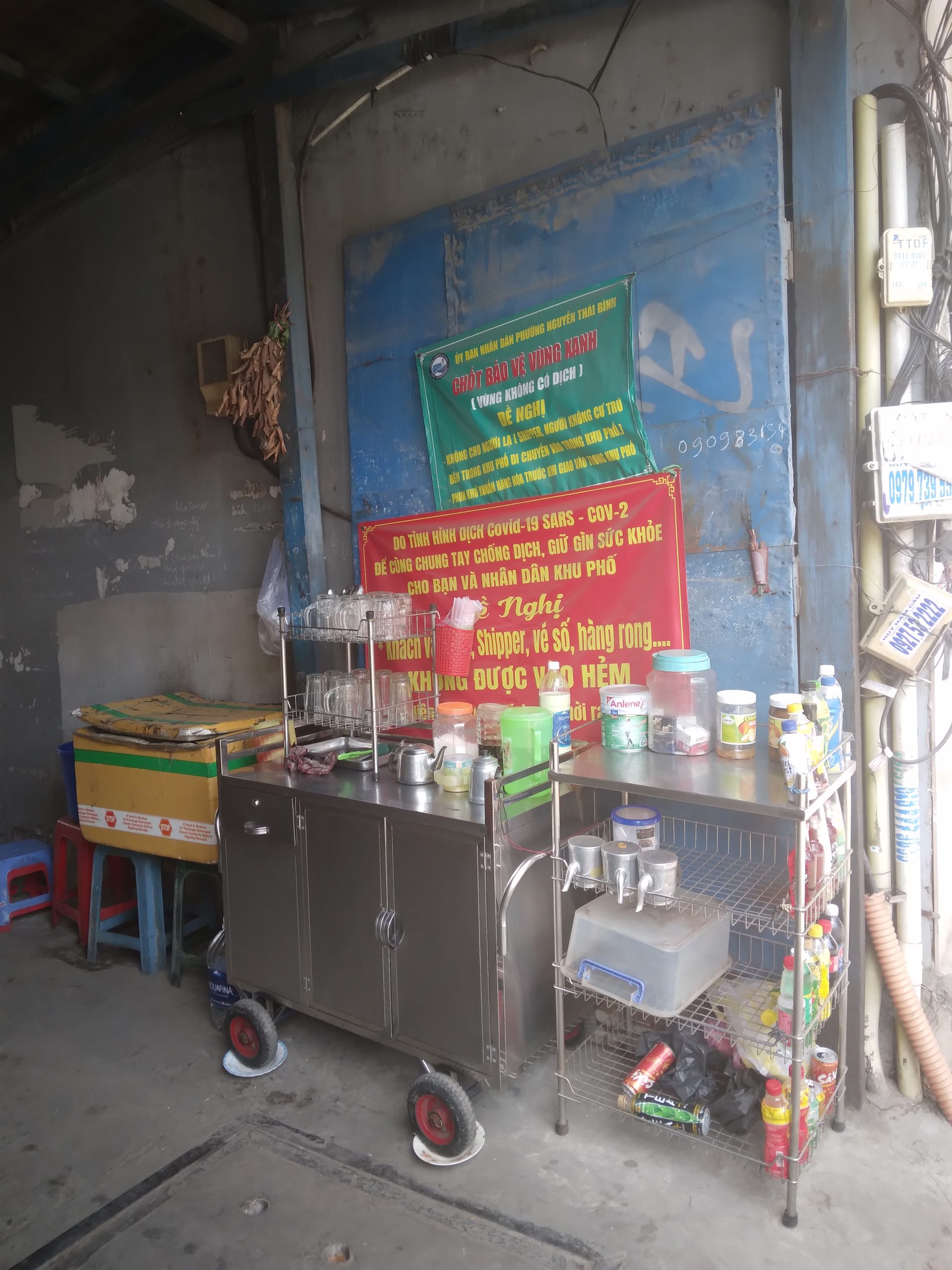
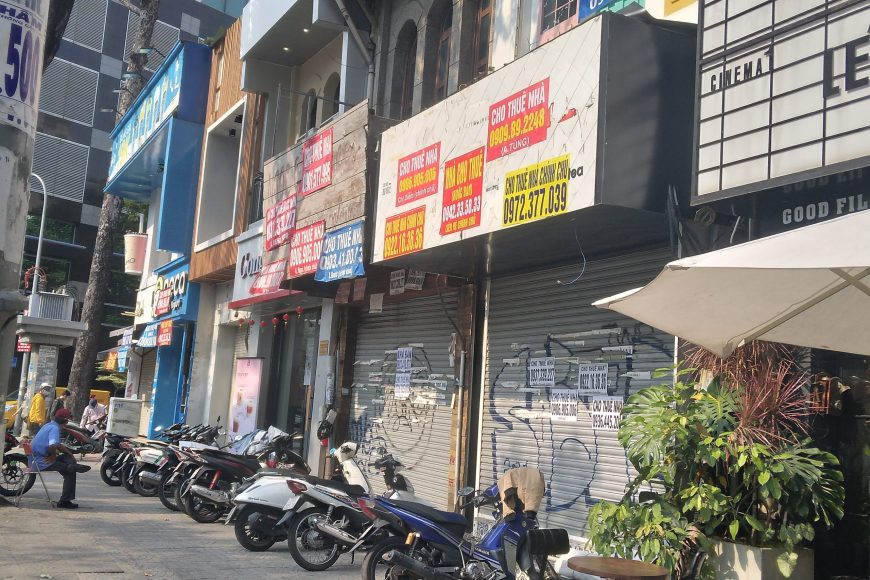
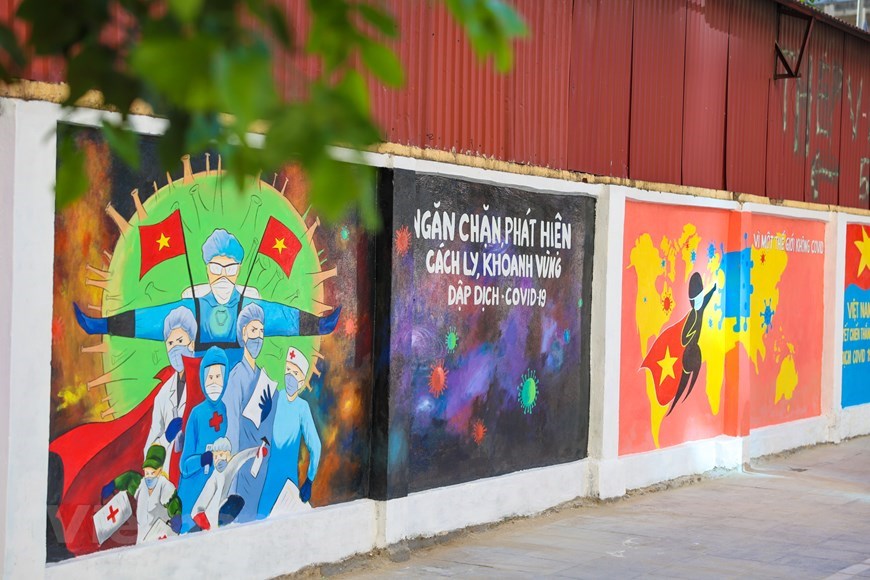
Photo 1: A blue public information banner reads ‘The best vaccine is the vaccine you can get the earliest’. The red poster reads ‘COVID-19 epidemic prevention is protecting yourself, family and society’.
Photo 2: Manual disinfectant machine used in Phu Nhuan district, Ho Chi Minh City. This object featured in ‘Calm’, a recent exhibition of pandemic paraphernalia by collector Huynh Minh Hiep. Sign reads: Ho Chi Minh City command. Military command of Phu Nhuan district. Disinfectant vehicle. Join hands to repel the COVID-19 virus’.
Photo 3: Official COVID-19 signage partially hidden by street selling paraphernalia in a district 1 alley entrance following the resumption of economic activity after the stringent citywide lockdown during the fourth wave of COVID-19 in Ho Chi Minh City.
Photo 4: Vinyl and paper for rent and for sale signs on shuttered premises in district 1 – the commercial centre of Ho Chi Minh City – following the citywide COVID-19 lockdown.
Photo 5: COVID-19 murals painted by Ho Chi Minh Communist Youth Union.

